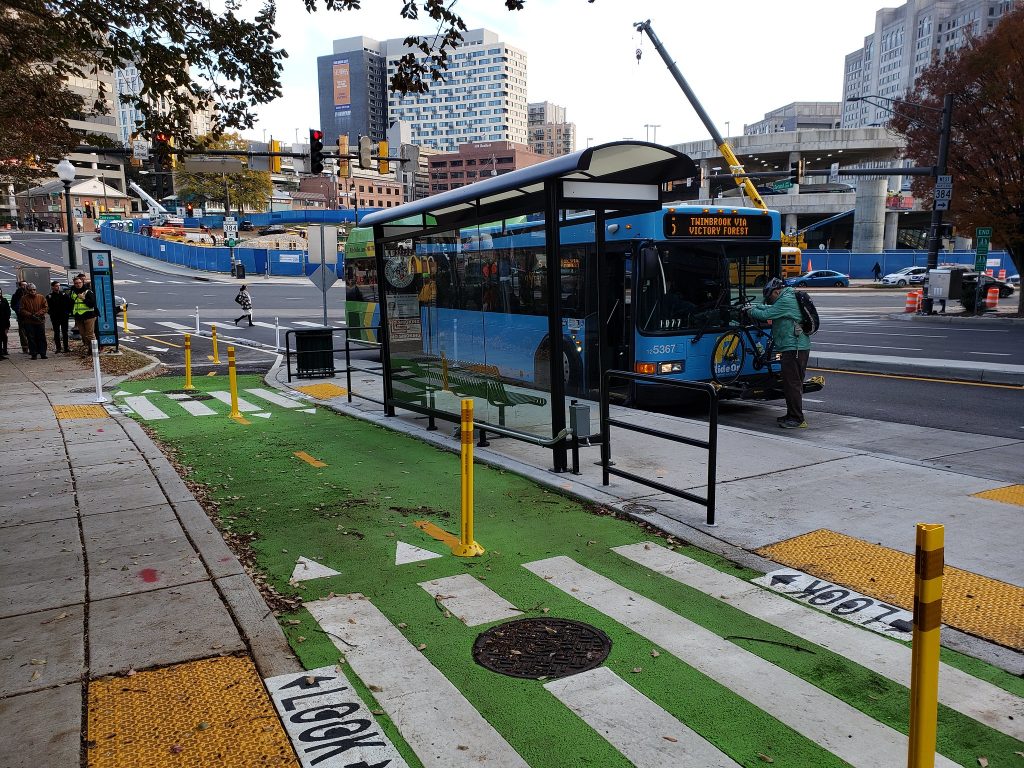
What’s next for the INVEST Act?

Last week, the House passed a long-term transportation authorization—the INVEST Act—as part of the Moving Forward Act, House Democrats’ large infrastructure package. But the INVEST Act likely won’t become law anytime soon. Here’s how the INVEST Act advances the debate by moving the starting line for future legislation—and presses the Senate to do something better.

Biking near the National Mall in Washington, DC. Photo by Elvert Barnes on Flickr’s Creative Commons
Last week, the House of Representatives passed the Moving Forward Act, an infrastructure package that included the INVEST Act. The INVEST Act is a long-term transportation authorization that takes a markedly different approach to transportation policy: it fundamentally changes the programs at the heart of federal transportation policy to help communities improve access, safety, and their maintenance backlogs.
But President Trump and the Senate majority have already signaled that they won’t support the bill, and Senate Democrats are supporting a far more inferior reauthorization proposal passed in a committee last summer. And with Congress focused on other pressing issues such as another COVID-19 relief bill, there’s not much time left on the Congressional calendar for Senators and Representatives to agree on a massive infrastructure package. The INVEST Act is likely dead on arrival.
But all of our research and reports, your calls and messages to legislators, the op-eds, the group and individual sign-on letters, the fact sheets, the social media campaigns, the blogs and more had a major impact. The hard work that made the INVEST Act a new kind of transportation bill laid a powerful foundation for future transportation legislation, making a better final product—whenever one finally passes—far more likely.
“You think nothing is happening on the Hill, and then it all happens in two days,” said Chris Rall, T4America’s Outreach Director. While the actual legislating only occurs over the course of a few weeks, the work that goes into that first draft bill takes months—years, even. T4America has been laying the groundwork for this new kind of transportation bill for at least the last year, launching our three principles for transportation success in October 2019—all three of which were included in the INVEST Act.
“One chamber of Congress just voted to make fundamental reform, and that’s a significant victory,” said T4America policy director Scott Goldstein. “The House Transportation and Infrastructure Committee did the hearings, research, and outreach. Votes were cast and it’s forever in the Congressional record. And once things are written down, they stick around and become normalized. That’s massive.”
This victory is worlds away from the process that produced MAP-21, a transportation authorization that Congress passed in 2012. During those negotiations, the House attempted to kick public transportation entirely out of the highway trust fund, undoing the political compromise forged by President Reagan in the 1980s to raise the gas tax and devote a portion to transit. A rapid, massive group sign-on letter organized by T4America ultimately prevented the House from passing their calamitous reauthorization proposal, leading House legislators to enter conference with the Senate with only a draft.
Unlike MAP-21, the FAST Act that replaced it in 2015, and all other transportation authorizations, the INVEST Act starts the work of finally connecting federal funding to the outcomes Americans want—rather than the Senate’s approach of simply pouring more money into the same old broken systems and hoping for better results.
The INVEST Act almost certainly won’t become law this year. But when lawmakers are able to focus on an infrastructure package, the INVEST Act—a bill that updates our broken federal transportation program by prioritizing maintenance, safety, access, climate, and equity—will be the template for the House. That’s a success in our books.



